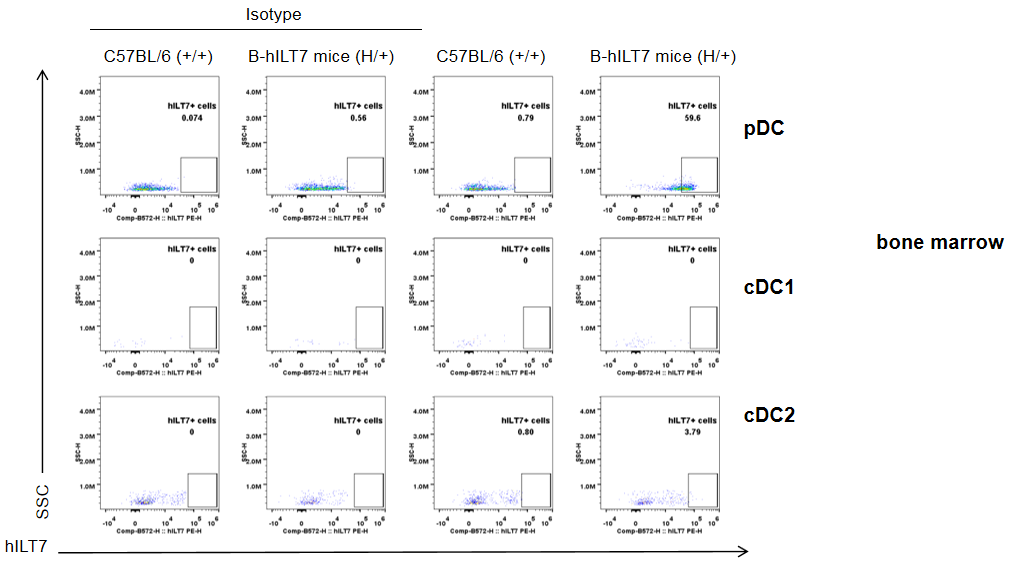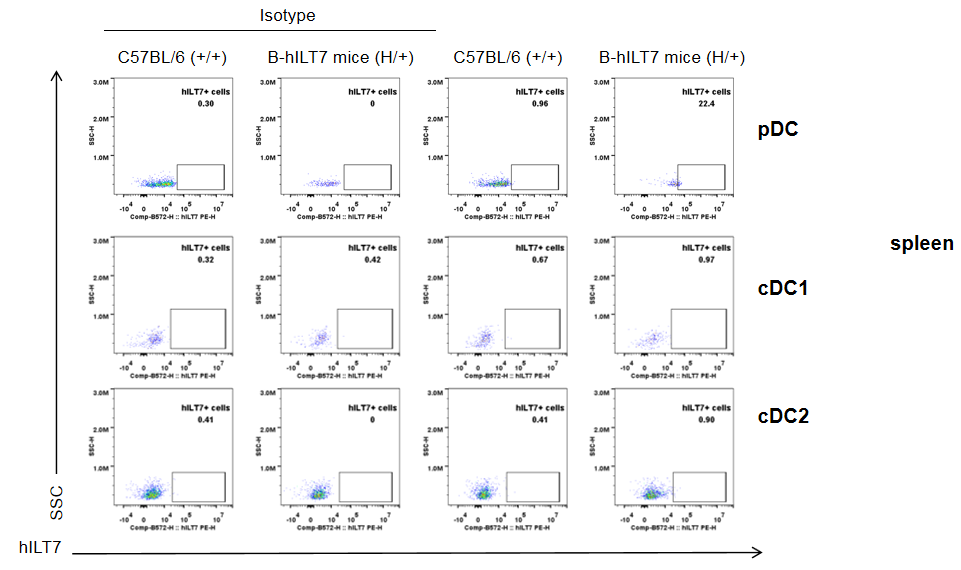Description
- ILT7 (also known as LILRA4 and CD85g) is exclusively expressed in resting pDCs and its downregulation in activated or differentiated pDCs. When activated by TLR agonists, such as CpG or HSV, or treated with cytokine IL-3, pDCs downregulate ILT7 surface expression, as a result of reduced transcript expression by activated pDCs. The interaction between BST2 and ILT7 leads to inhibition of TLR-induced type I IFN induction.
- The exons 1-8 of human ILT7 gene that encode the full-length protein were inserted into the Hipp11 gene locus site in B-hILT7 mice.
- Human ILT7 was exclusively detectable in homozygous B-hILT7 mice, but not in wild type C57BL/6 mice.
- Human pDC-specific ILT7 and FcεRIγ form a receptor complex that transduces ITAM-mediated signals that inhibit TLR-induced type I IFN production by human pDCs.
- There is no human FcεRIγ in B-hILT7 mice.
Targeting strategy
Gene targeting strategy for B-hILT7 mice. The full coding sequences of human ILT7 gene, including the promoter, 5’UTR and 3’UTR are inserted into mouse Hipp11 (H11) locus in B-hILT7 mice.
Protein expression analysis
Strain specific ILT7 expression analysis in wild type C57BL/6 mice and heterozygous B-hILT7 mice by flow cytometry. Bone marrow cells were collected from wild type C57BL/6 mice (+/+) and heterozygous B-hILT7 mice (H/+), and analyzed by flow cytometry. Human ILT7 was exclusively detectable in pDCs not cDCs of heterozygous B-hILT7 mice, but not in wild type C57BL/6 mice.
Strain specific ILT7 expression analysis in wild type C57BL/6 mice and heterozygous B-hILT7 mice by flow cytometry. Splenocytes cells were collected from wild type C57BL/6 mice (+/+) and heterozygous B-hILT7 mice (H/+), and analyzed by flow cytometry. Human ILT7 was exclusively detectable in pDCs not cDCs of heterozygous B-hILT7 mice, but not in wild type C57BL/6 mice.




